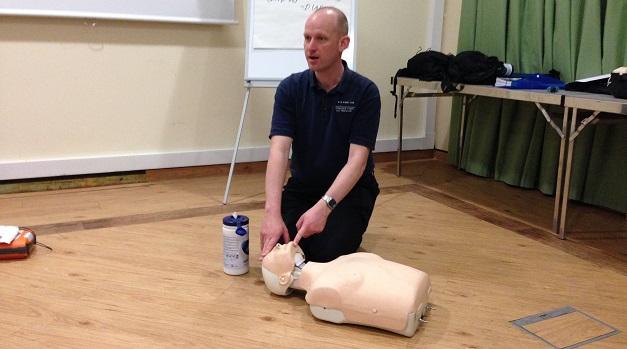Last month the BCRS team were fortunate enough to be provided with First Aid training – a valuable life skill that saves countless lives every year.
Many of you will remember the famous Hands-only CPR advert created by the British Heart Foundation featuring Vinnie Jones and the Bee Gee’s song, Stayin’ Alive. Tattooed onto Vinnie’s hands were the words ‘hard’ and ‘fast’, emphasising the speed and strength needed to provide effective CPR; while the beat of Stayin’ Alive, playing in the background, provided the perfect indication of when to make chest compressions.
It is not surprising to learn that this advert was considered to be a major success. The use of humour was instrumental in making this advert memorable – one which the public would be able to remember when faced with the terrifying situation of administering CPR. Since the advert first aired in 2012, it is thought that hundreds of lives have been saved as a direct result of people having more confidence and knowledge of conducting CPR.
In the 1 day session held at the BCRS head office, we were taught to conduct a primary survey before going ahead with CPR, which mainly concerns checking for any immediate danger; ensuring the patient’s airways are fully open by tilting the head and chin backwards; and finally checking for breathing and circulation. If they are breathing, a secondary survey must be conducted to check for any physical harm or blood loss. However, if they are not breathing, this is when CPR should commence. CPR is administered, for an adult, by providing 30 chest compressions followed by 2 rescue breaths – this should then be repeated ideally until emergency services arrive.
Matthew Slater, Marketing Assistant, found the training incredibly helpful.
“Previously, the closest I had got to receiving First Aid training was by watching the Stayin’ Alive advert on TV. But, after receiving training, I know that if I was placed in a situation where someone was in need of CPR, I would feel much more confident about administering it. Before this, due to both a lack of experience and knowledge of the correct technique, I would have felt uneasy about going ahead with it.
“My main fear was about injuring people with the wrong technique, but we were reminded that saving a life is much more important than a few broken ribs. Overall, it was a great experience”, concluded Matthew.
The team were also advised on how to deal with choking, wounds and bleeding, burns, common allergic reactions and common physical conditions and diseases – such as diabetes, epilepsy, heart attacks and strokes.
Everyone found the First Aid training useful and will prove to be useful in both a working and personal capacity.




